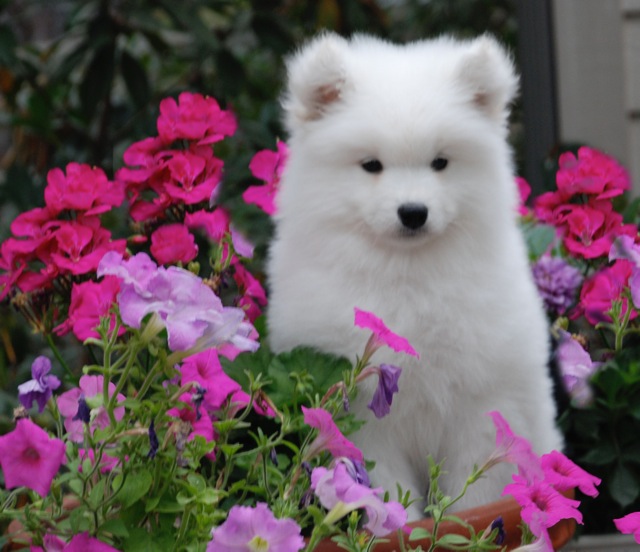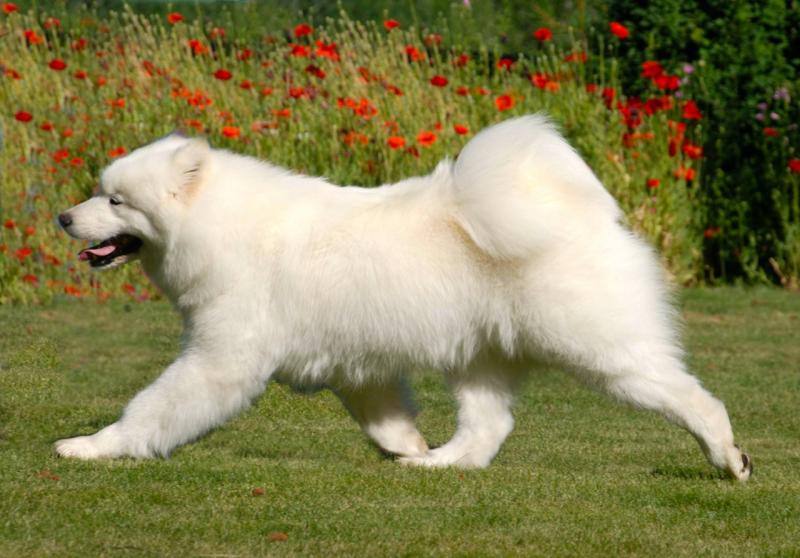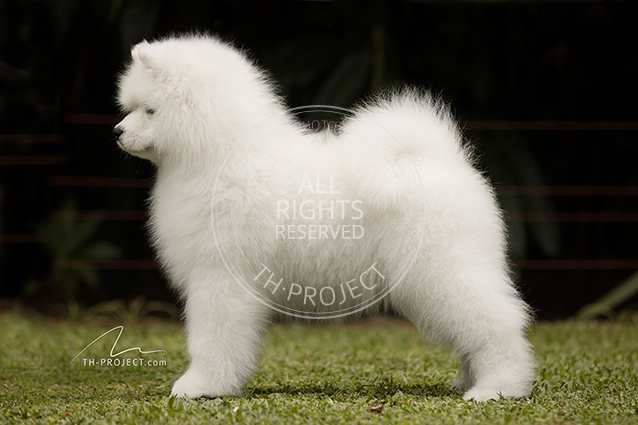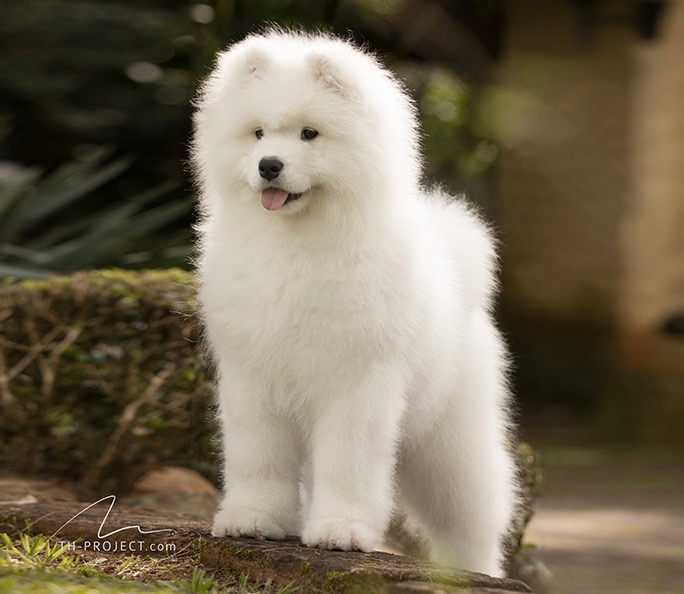The Samoyed

Own a part of one of the nation’s top lines of Samoyeds.
Providing wonderful, loving companions and top winning show Samoyeds for four decades!
Beautiful, sweet pet and show puppies AVAILABLE NOW! Secure your Samoyed friend today!
A Brief History
The Samoyed is one of the oldest domesticated breeds of dogs, the Samoyed was bred and developed by the nomadic Samoyede tribes in Northeastern Siberia, east of the Ural Mountains, north of the Arctic Circle
It appears that the primary function of these dogs was for reindeer herding, though there is evidence that they were used to perform other various tasks in this harsh environment, such as, sledding, packing, guard dog, companion.
Different from other arctic breeds, the Samoyed people shared their dwellings with their beloved dogs. Thus developing a dog with friendly, people orientated dispositions. Brought to the outside world from their arctic environment in the late 1800s, they soon became know as the dogs with the smiling faces, or the dogs of Christmas. Samoyeds have a place in history as the sled dogs often used by polar explorers. The first dog to set paw on the South Pole was a Samoyed, the lead dog of Roald Amundsen’s team in 1911.
These two foundation bitches were somewhat different in type. The first one having more leg, with wonderful free and easy movement. The other had much more type and beauty. Believing that the standard called for a agile freely moving dog with much beauty and correct type, her goal was to breed a dog that exhibited all of these qualities. The rest is history; these two foundation bitches are behind all of today’s Polar Mist dogs, either one or the other or both. Lynette did not limit her breeding program to dogs in the area, or her own stud dogs, mostly shipping her bitches off to the stud that she felt could combine with and offer the best qualities to a particular bitch.
Description
This beautiful dog is of medium size, white in color, or creamy white with various shadings of what is called biscuit, or a combination of white, biscuit and cream color, all are acceptable shades.
The Samoyed is a double coated dog, the undercoat is of short soft thick close wool, the outer coat is longer and harsher in texture and to be stand off, weather resistant quality. The tail is carried over the back, ears are erect, with the males caring more of a ruff around the shoulders.
They have dark eyes, eye rims, lips and noses, ranging from brown, liver, or dudley shadings. The nose can change color with age and season of the year.
The standard height for a male is 21 to 23 1/2 inches at the withers, the average weight is 50 to 65 pounds. For females the standard height is 19 to 21 inches at the withers and an average weight is 35 to 50 pounds.
They are strongly built, light and agile on their feet with more substance of bone than other dogs of comparable size. The disposition is intelligent, gentle, loyal, alert and adaptable, friendly but conservative, (though you won’t find too many very conservative, they love people and especially children) in most cases.


Grooming
The Samoyed, as with all coated breeds of dogs, need to be thoroughly groomed on a regular basis. The coat does not tend to mat or knot up too easily as with dogs with long silky types of hair.
I recommend that the dog be thoroughly combed out and bathed at least every 8 weeks to prevent it from becoming a real chore to groom. Of course you can do this more often which will keep your dog looking even better.
When dirty, let them dry off if they are wet, then take a brush to them and you will have a dog that will clean up quite nicely. Unless you are set up with an appropriate grooming table and bathing area, it is usually better to have a professional groom your dog on that 6 to 8 week basis. With you doing some brushing in-between to keep them looking their best.
Shedding
These dogs tend to do all of their shedding all at once, with very little shed off in between. It will usually start on the shoulders and legs first and work its way up the body. The best thing to do once the hair has loosened up, is to get in there with a comb and get all of the loose hair out, the sooner you do it the better.
Once shed out, the dog will start growing a new coat and there will be little, if no shedding until the next time, which will be several months. This can very with sex of dog and age. Usually this occurs twice a year, ranging from some light undercoat shedding to a full and complete coat drop, outer and under coat.
Training
It is generally felt that most northern dog breeds tend to be somewhat independent. I feel that the Samoyed probably has the least of the characteristic, though some individuals are more so. I have found that the key is correct handling and early training which are imperative. They train and respond very well to kind, but firm, reward type training. Lots of praise and treats when the behavior you desire is exhibited. A firm no nonsense voice for corrections.

Shouldn’t you consider owning a part of one of the nation’s top lines of Samoyeds produced in America?
Providing wonderful, loving companions and top winning show Samoyeds for four decades!
Beautiful, sweet pet and show puppies AVAILABLE NOW! Secure your Samoyed friend today!

